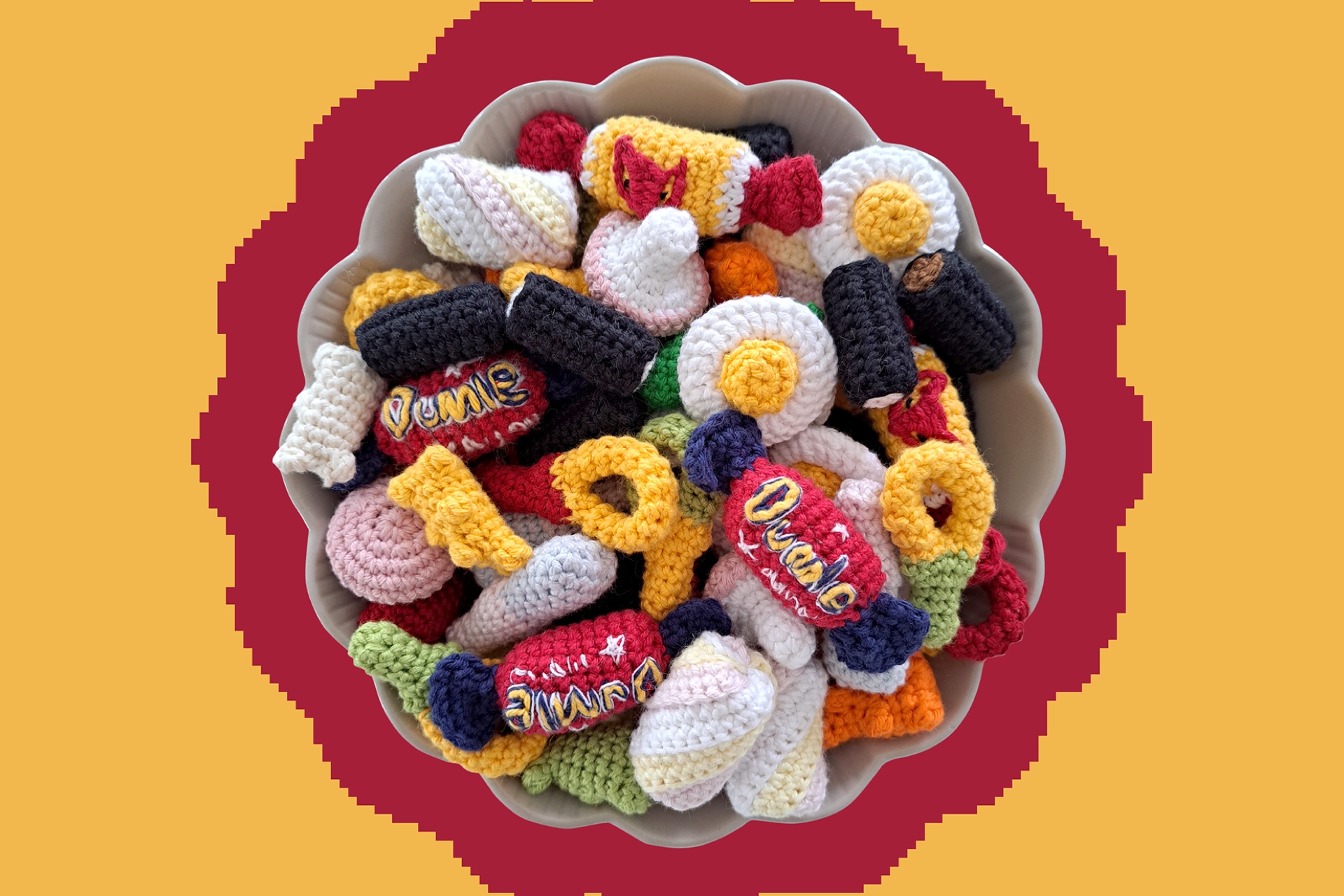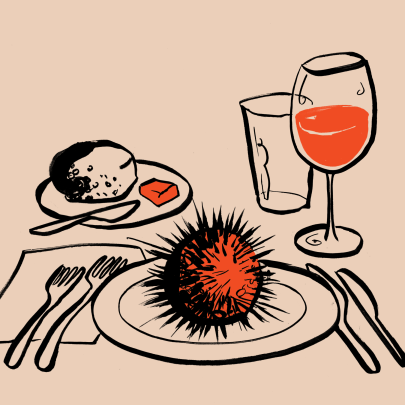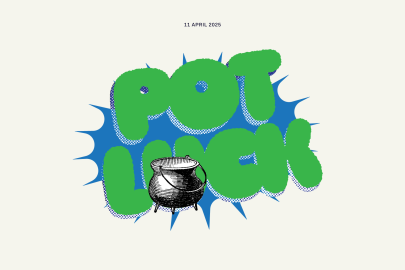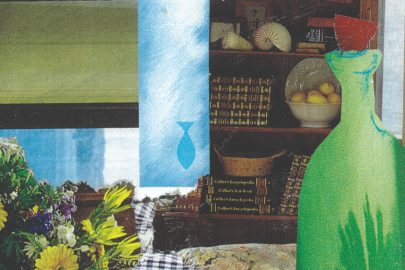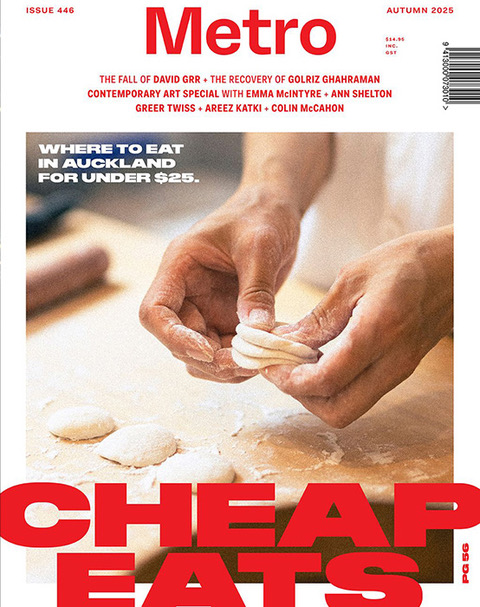Sep 30, 2024 Food
What a time to have a sweet tooth in Tāmaki Makaurau. Line up for a Daily Bread custard slice, with its ruby ooze of raspberry curd and vanilla-speckled crème pât queue at Duck Island for a cone of fairy bread; whip by Miann for a block of house-made bean-to-bar chocolate; or drop by Mibo for some buttery maple monkey bread. Still, nothing quite replaces the lure of the lowbrow — a jaunt to your local dairy for a $2 bag of lollies. Whether you’re partial to a gummy shark, a sour rainbow belt or a much-maligned banana Fruit Burst or a Trolli pizza, there’s a lolly for you.
The history of lollies — as something distinct from, but possibly incorporating small quantities of, chocolate — is long in this country, says food historian David Veart, author of First Catch Your Weka: A Story of New Zealand Cooking. He explains that early Māori cooked down tī kōuka (cabbage tree) roots in earth ovens to a caramelised, chewable nectar. “It would have been marching food,” he says, “something concentrated, lightweight, and high-carb, for occasions when you’ve got a party crossing the Southern Alps.”
This embryonic sugar industry was bolstered by the arrival of Scottish settlers, who brought sugarcane-based sweets to Aotearoa in the 19th century. The Scots had been refining sugar since the 1650s, giving rise to a range of sweets such as toffee, tablet (a traditional buttery fudge) and Edinburgh rock (a crumbly pastel confection). While in Britain people tended to buy sweets from specialised sweetmakers, no such industry existed when settlers arrived here, so they set about creating one.
Lolly development expanded as rapidly as a pan of honeycomb after the addition of baking soda. Cookbooks began including recipes for sweets, from homemade Kremelta chocolate to coconut ice — during the First World War, well-known Wellington cooking demonstrator Una Carter even published a specialised confectionery cookbook, Home Made Sweets, which went into at least three editions.
If sweet-making was picking up in the home, it was also booming commercially, thanks in part to the fact the New Zealand government financially backed the Chelsea Sugar refinery in Auckland from 1885. “We ended up with a state-subsidised sugar industry,” says Veart. While the New Zealand sugar industry was deregulated in 1986, making us one of the few nations in the world whose sugar industry is wholly deregulated, the factory remains the country’s main source of sugar products.
Several local industrial confectioners established in the 19th century are still in production today, among them Mayceys Confectionery (established 1875), Rainbow Confectionery (1884) and Whittaker’s (1896). But the local lolly landscape continued to expand during the 20th century through manufacturers such as Carousel Confectionery, Queen Anne, licorice powerhouse RJ’s and artisan producers such as Kapiti Candy Co. Australian-based brands such as Pascall and The Natural Confectionery Company also have a large local presence.
New Zealanders have been enjoying lollies for well over a century. But the question of what makes a good lolly remains contentious. In a 2020 article for The Spinoff, Madeleine Chapman ranked 66 dairy lollies and named the sour cola bottle the best in the country. Online forums exploded: how could she have ranked giant spearmint leaves last on the list? Why were the top two lollies both sour? What was up with the “cooked” decision to place sour cola bottles first but non-sour ones second to last? And where, but where, were the jersey caramels?
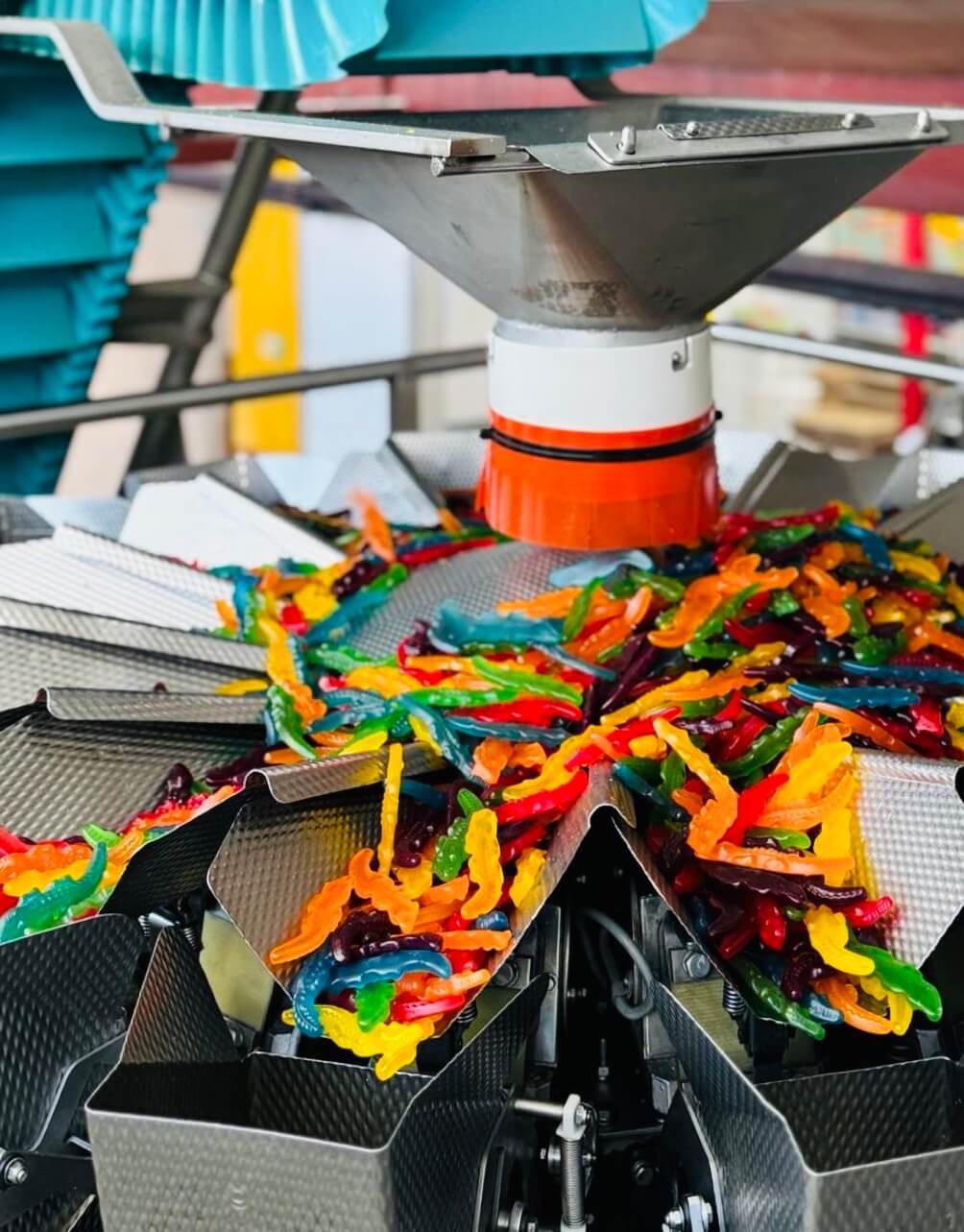
Gummy Gators
Highly scientific qualitative research (aka badgering friends, family, and strangers at parties) suggests that nobody has the same favourite lolly. One survey respondent liked gummy penguins, whose peach iced tea flavour was “always a delightful surprise”. Another professed a preference for “any red lolly”. A third stridently defended sour Skittles, which she noted had the rare distinction of being “properly sour the whole way through”. Beyond the personal sphere, the Instagram dairy-mixed-bag reviewers @wgtn_2dollar_mix_reviews and @mum.can.i.have.two.dollars seem to suggest a lolly’s success depends partly on a dairy’s range and curation: the best lolly is one eaten among other lollies and enjoyed in contrast to them.
Even dairy owners couldn’t come up with a consensus. I spent an afternoon visiting all the dairies within walking distance of my house. Which of the $2 bags was their top seller? At one, it was the gummy strawberries and jet planes. At another, TNTs and Sour Feijoas. At the place down the hill, Fruit Bursts. One suburb over, sour cola bottles, peach hearts and mixed bags. There was no agreed crowd favourite. Undeterred, I went straight to an expert — Cathy Phillips, business development manager at Mayceys Confectionery.
Mayceys, which began as a manufacturer of medicated confectionery — readers of an older generation may recognise the retro Pulmonas pastilles tins, still used across the motu to hold fishing tackle and safety pins — is known for producing Kiwi classics such as the sour fruit mix (feijoas, strawberries, peaches, apples and grapes), colourful crocodiles, GloHarts and Pink Smokers. The Mayceys factory is an industrial single-storey building on an unassuming New Lynn street. Inside, it’s a total assault on the senses. There are designated rooms for sugar boiling, panning, packing; another for producing starch-moulded sweets like the Crocodiles and Sour Feijoas; and a separate chocolate factory, too. Machines pipe noisily. On days when Mayceys is producing Kurols throat lozenges, the aroma is so strong it can clear your nasal passages. When Pink Smokers are being turned out, the air is filled with that distinct musky fragrance.
A winning lolly comes down to all those sensory factors, says Phillips — a truth speedily recognised amid the sights and sounds of the factory. “A lot of it’s actually about texture and mouthfeel — has it got great chew, crunch, smoothness? Does it fizz or tingle? Is it the right balance of soft and firm?” One of the most fun things about sugar, the main ingredient of most lollies, is its textural malleability. Heated to the right temperatures, it can be tooth-pullingly chewy, brittle, pillowy soft or gel-like. A great lolly highlights that versatility. “It should be texturally delightful.”
In turn, a lolly’s looks are key. A good lolly has to be fun, says Phillips. “Shape, colour, packaging… it’s got to make you smile.” It’s no accident that modern sweets are usually bright, multi-hued and playful. Stand in front of any pick-n-mix lolly station in the country and you’re dazzled by the options. There are lollies resembling brains or aliens, lollies that look like sharks and volcanoes, black-and-white gummy penguins, cherry-flavoured chicken feet. There are lollies that look like other types of food — fried eggs, carrots, croissants, chocolate fish, hyper-coloured fruits. There are lollies you can play with before eating — consider the novelty factor of disassembling the Trolli gummy hamburger, the challenge of peeling each individual strip of colour off a sour rainbow belt, the ironic pleasure of moulding one of those tooth-decaying fake teeth gummies over your own teeth.
Finally, a lolly should have a bold, unique and enjoyable flavour. “Mayceys’ Sour Feijoas are a top seller for a reason,” says Phillips. “That’s an iconic Kiwi flavour and really strong and delicious.” Strong flavours are also behind such dairy classics as the cola bottle, yellow-and-red peach hearts, tangy fruit chews and sour watermelons. Notably, a sour or tangy savour can lend an edge because citric acid literally makes our mouth water. Sour lollies are fun to eat, offering a kind of built-in tolerance game.
Artisan confectioners Kapiti Candy Co agree that flavour, texture and appearance are key to a great lolly — although novelty shapes are less of a focus for them. Owner Victoria Livingston says that as a “little luxury” for people, confectionery should be genuinely delicious — a treat worth spending their daily sugar intake on. Kapiti Candy Co creates its range of sweets — from marshmallows soft as a sigh to luscious jellies, nougat, fudge and buttery nut brittles — by hand in small batches, to maximise control over every aspect. Livingston’s favourite? “The raspberry chocolate-coated marshmallow with the sprinkle of freeze-dried raspberry on top. It’s decadent, it’s lush, the marshmallow is already delicious and then you’re gilding the lily by coating it in chocolate.”
Although we might agree that a lolly’s success depends on texture, flavour and appearance, personal preference clearly plays a big role. I found myself wondering: does what constitutes a good lolly differ according to your generation?
Some in the business say not. Mathew Hardie, business manager at Palmerston North confectioners Carousel, thinks New Zealanders’ tastes haven’t changed hugely over the past 50 years. Carousel is known for its retro-packaged Spaceman candy sticks, tangy fruit chews in apple, grape and lemon, and a range of nougats and fudges sold in supermarket bulk bins, all of which it has been producing for decades. The Spaceman candy stick — originally produced by Bonza Confectionery, which Carousel bought in 2006, and known as a candy cigarette until health concerns ushered in a rebrand — has been manufactured since the early 1970s. “The greats seem to last generations,” says Hardie. “We like to think a winning lolly is something someone of any age can enjoy.”
Hina Patel, owner of Creswick Foodmarket in Wellington, purveyors of a wide selection of $2 lolly bags, agrees. She sees customers of all ages buying all sorts of lollies: in the 10 minutes I was in the shop, I spotted two tradies stocking up on licorice allsorts and pick-n-mix, a high schooler eyeing up the gummy watermelons, and an older man choosing a bag of Crocodiles.
Other lolly wonks disagree, arguing that generational differences are a big factor. Phillips explains that while Mayceys was historically known for its Pink Smokers, Kurols pastilles and GloHarts, its Crocodiles (the company’s mascot since the 1970s) and sour fruits now outsell everything else. She says that public awareness of the negative health effects of sugar consumption has skyrocketed in recent years, leading Mayceys to develop a forthcoming range of gummy vitamins and lozenges. “We’re keen to develop our range in the healthcare category, where our roots are.” Similarly, Kapiti Candy Co has seen a boom in sales across its sugar-free range.
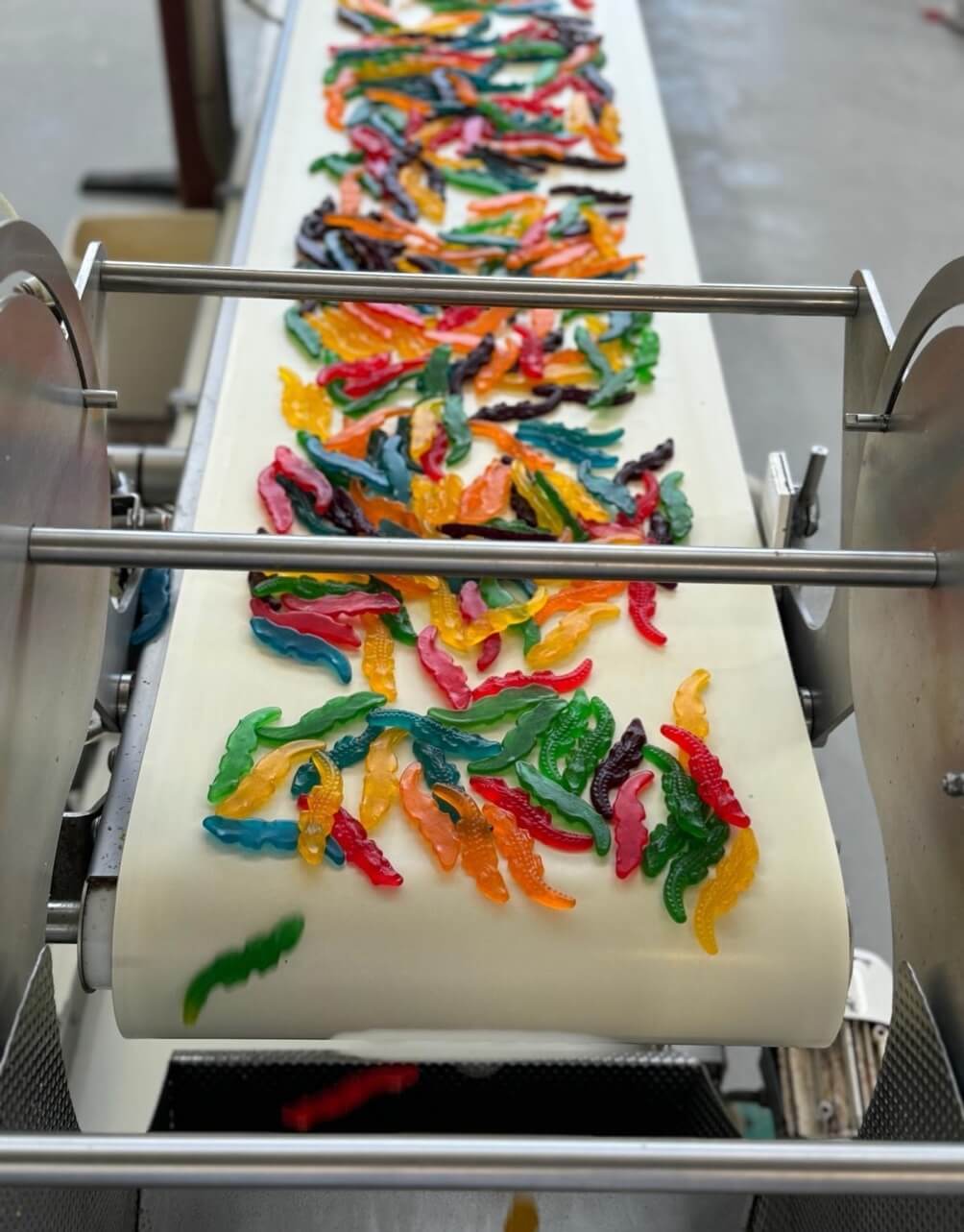
More Gummy Gators
Nostalgia, too, shapes sweets consumption — and what people get nostalgic for differs between the generations. Tāmaki Makaurau-based artist Simon Lewis Wards, who is known for his glass sculptures of iconic local lollies including jet planes and milk bottles, suggests there’s no such thing as a universally ‘great’ lolly. Instead, it’s all about what you’re exposed to as a child. His own favourite lolly, and the first he cast in glass, is the jet plane: “That’s the lolly that puts me in the time machine.” But it’s different for his kids (aged 12, 8 and 6), whose favourites include necklaces made of pastel rings and marshmallow twisties. “They’re having the same experience, there’s that same glee, but with different lollies.”
Wards knows better than most how nostalgic New Zealanders get about lollies. “After I started putting my work into galleries, people would tell me these unsolicited stories about going to the dairy as a kid to buy sweets and you could always see a look in their eye that was quite special,” he says. I recognised this look from almost all the friends and strangers I spoke to for this story: it seems there’s hardly a person who grew up in Aotearoa who doesn’t have a misty-eyed childhood story about the dairy lolly pilgrimage, whether they were after chocolate fish or sour gummy bears. That probably makes sense, as Veart points out, because lollies are often the first purchases kids make of their own accord. Going to the dairy with $2 from Mum, getting to choose what you’ll have and receiving as much attention from the shopkeeper as an adult is an early symbol of independence.
No wonder we get salty about the loss of our favourite sweets. Discontinued classics, from Tangy Fruits to the peach Fruit Burst to Snifters, have inspired impassioned ‘Bring back [X]’ Facebook groups with members numbering in the thousands. Of course, these lost confections are delicious — who hasn’t marvelled at the perfectly crisp outer shell of a Snifter, giving way to luscious chocolate and minty delight? — but as Livingston notes, the secret ingredient really is nostalgia. “There are always those of a certain generation who remember past sweets and say, ‘Oh, you couldn’t go past a Tangy Fruit at the cinema…’,” she laughs. “We’re always trying to look for a new Tangy Fruit or a new Sparkle. But it’s not until they’re gone that you realise how good they were, and they acquire a certain status in retrospect.”
Still, surely our attachment to lollies past and present says something about us. New Zealanders do have a very sweet tooth: at 37 teaspoons per day, our average sugar consumption is six times higher than the recommended amount. Improved health education over the past few decades means the general public knows better than ever that sugar is bad for us — a factor contributing to our high rates of type 2 diabetes and tooth decay. Yet none of the dairy owners I spoke to felt lolly sales had significantly declined in the past decade, and confectionery companies continue to thrive. So, why do we love lollies so much?
In his book Sweets: A History of Temptation, confectionery historian Tim Richardson explains that lollies began as a form of medicine. As far back as the ninth century, apothecaries of the Arab empire used sugar to sweeten pills. We’ve come a long way in our understanding of sugar’s health drawbacks since those days But, Richardson observes, “Sweets certainly make us feel better, at least psychologically, so all sweets are medicine of a sort, regardless of their pharmaceutical value.”
Simply put, we continue to eat lollies because it’s fun — and perhaps in moderation they don’t need to be the bad guy. “It’s not a night out, it’s not a bottle of wine,” says Livingston. “It’s just a little something sweet as a treat.” A lolly is a lark for the senses, a trip for the tastebuds, a guaranteed mood-booster, a link to childhood.
It’s also an affordable pleasure. “You might not go to the movies, you might not go to Rainbow’s End,” says Hardie, “but most people can afford to sit on the couch, watch something with the family and eat a bag of lollies.” In an era when times are tough for plenty of New Zealanders, that’s certainly a sweetness to savour.

